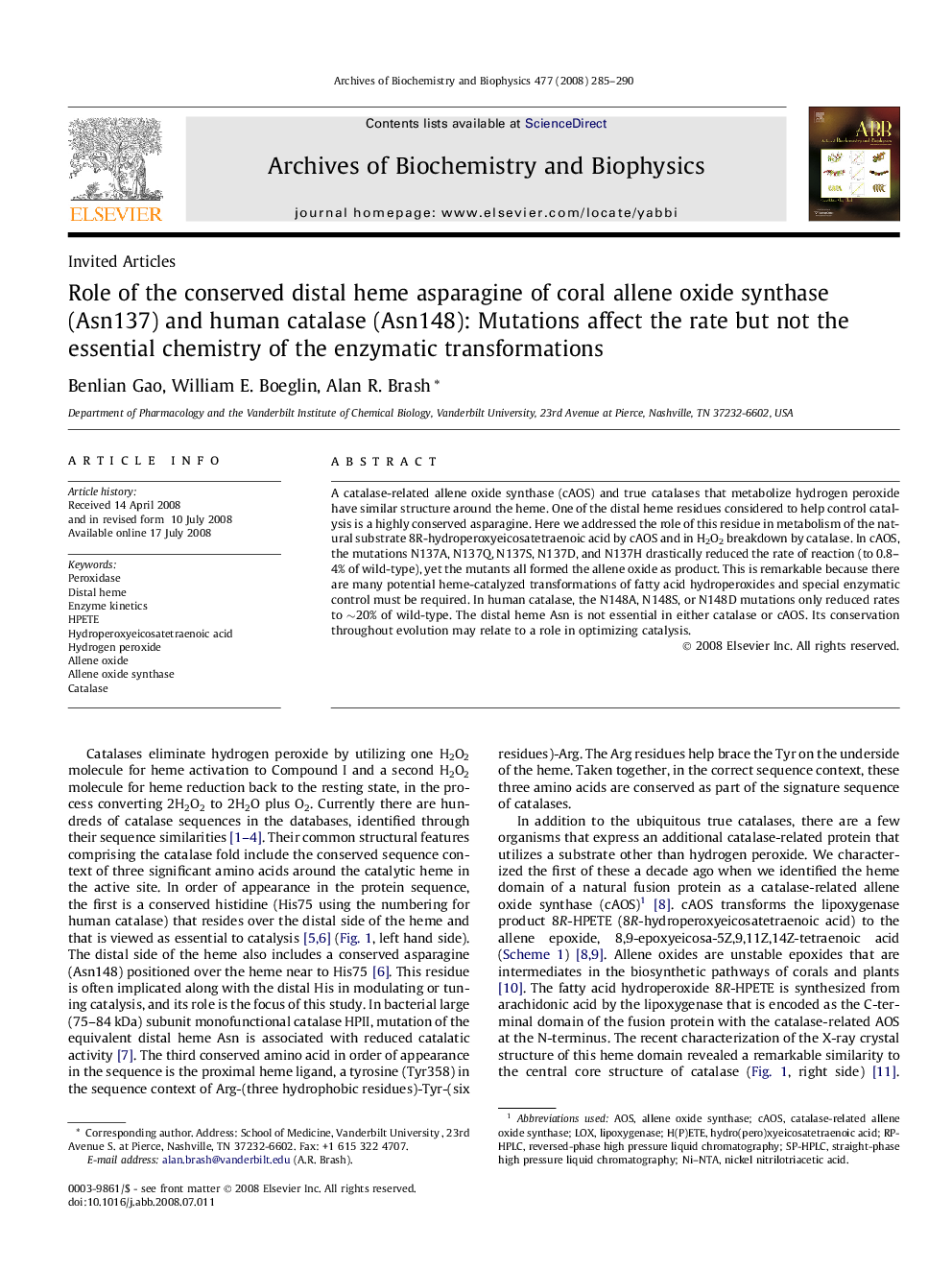| کد مقاله | کد نشریه | سال انتشار | مقاله انگلیسی | نسخه تمام متن |
|---|---|---|---|---|
| 1926589 | 1536471 | 2008 | 6 صفحه PDF | دانلود رایگان |

A catalase-related allene oxide synthase (cAOS) and true catalases that metabolize hydrogen peroxide have similar structure around the heme. One of the distal heme residues considered to help control catalysis is a highly conserved asparagine. Here we addressed the role of this residue in metabolism of the natural substrate 8R-hydroperoxyeicosatetraenoic acid by cAOS and in H2O2 breakdown by catalase. In cAOS, the mutations N137A, N137Q, N137S, N137D, and N137H drastically reduced the rate of reaction (to 0.8–4% of wild-type), yet the mutants all formed the allene oxide as product. This is remarkable because there are many potential heme-catalyzed transformations of fatty acid hydroperoxides and special enzymatic control must be required. In human catalase, the N148A, N148S, or N148D mutations only reduced rates to ∼20% of wild-type. The distal heme Asn is not essential in either catalase or cAOS. Its conservation throughout evolution may relate to a role in optimizing catalysis.
Journal: Archives of Biochemistry and Biophysics - Volume 477, Issue 2, 15 September 2008, Pages 285–290